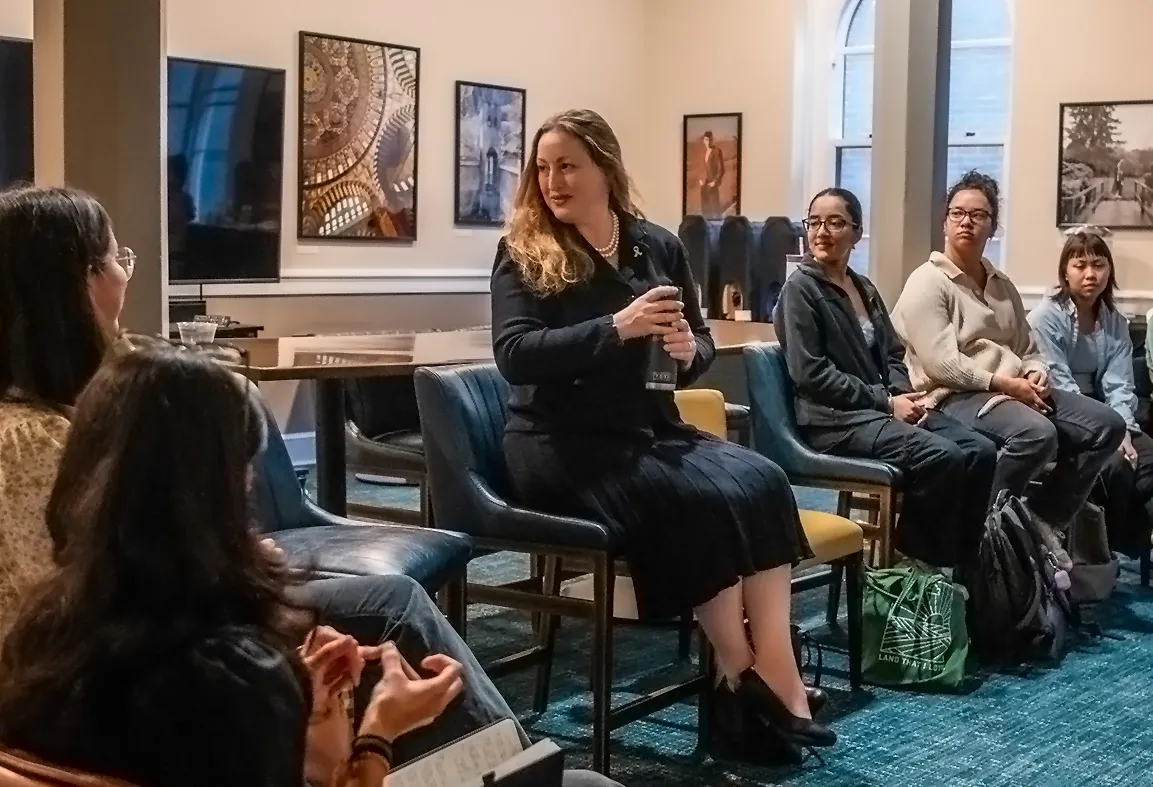
“Genius” Alum Takes Us Inside Her Work to Cure Pediatric Brain Cancer
Monje returned to the Vassar campus on October 24 to deliver a lecture about her work as the winner of the Richard Lounsbery Award, an annual prize given to young French and American scientists (age 45 and below) to recognize extraordinary scientific achievement in biology and medicine. It is administered by the National Academy of Sciences and the French Académie des Sciences. The recipient chooses where to deliver the lecture, and Monje chose her alma mater.
During her 45-minute talk, Monje took her audience on her journey from the lab bench studies of brain development to clinical trials of new strategies showing extraordinary promise for the treatment, and, perhaps one day the cure, of some of the most tragic childhood brain cancers. Seamlessly weaving what she learns from her young patients’ cancers, Monje’s discoveries have revolutionized both how we think of brain cancer and how we understand our brain’s normal function and development.
In her earliest work as a young researcher-doctor, Monje said, she and her lab partners discovered that the myelin tracts that speed up our brain processing can change and thicken because the glial cells respond directly to the activity in those brain areas.
However, Monje explained, sometimes these developing glial stem cells have mutations that convert them to cancer cells, and can lead to tumors called gliomas. She and her teams discovered that the same processes that allow us to learn and hone new skills stimulate the tumor cells to grow, expand, and form an interconnected network that feeds off the brain activity. The activity in the brain regions where the cancerous cells lurk is hijacked by the cancer cells, and the more active the brain area, the faster the tumor grows.
Using tumor tissue donated by the parents of children with these cancers, said Monje, her group is figuring out how the brain activity stimulates cancer growth and is developing ways to interrupt the connections between the tumor cells and the neurons, to slow and even halt the tumor growth.
Monje credited her creative and insightful approaches to her success as a researcher-clinician to the skills she gained while a student at Vassar. She concluded her lecture by crediting Professor of Biology Kathleen Susman and others with launching her career. When she was in high school, she recalled, she told her biology teacher she was planning to major in biology in college. “My teacher said he didn’t think I had the mind for science,” she said, “but [Susman], who was my pre-major advisor, encouraged me to pursue science, and many of the humanities courses I took also helped me with critical thinking skills that I use all the time.”
Susman called Monje’s work inspiring. “From bedside to lab bench and back again, her research is breaking new ground in both neuro-oncology and brain development neuroscience,” she said. “Her lecture showed us the dazzling science behind the therapeutic approaches she is developing and inspired all of us to be open to where our science and our observations may lead us.”